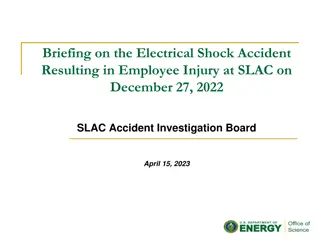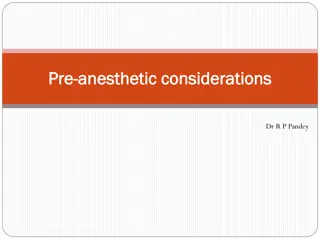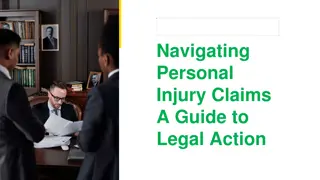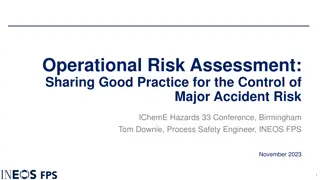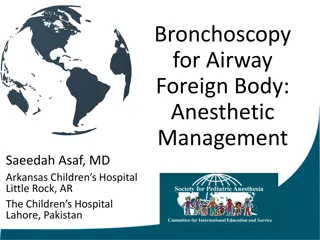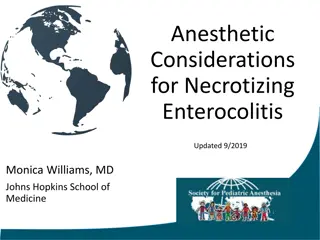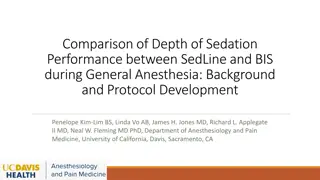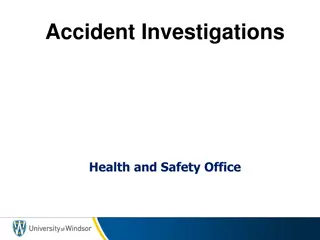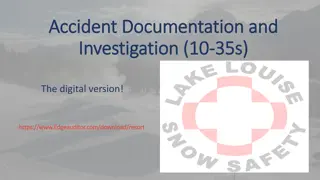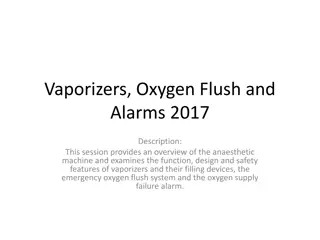Anesthetic accident
An overview of common anesthetic complications such as bradycardia, tachycardia, sudden hypotension, shock, and hypoxia in veterinary medicine. Discusses causes, symptoms, treatments, and preventive measures, along with images.
Download Presentation

Please find below an Image/Link to download the presentation.
The content on the website is provided AS IS for your information and personal use only. It may not be sold, licensed, or shared on other websites without obtaining consent from the author.If you encounter any issues during the download, it is possible that the publisher has removed the file from their server.
You are allowed to download the files provided on this website for personal or commercial use, subject to the condition that they are used lawfully. All files are the property of their respective owners.
The content on the website is provided AS IS for your information and personal use only. It may not be sold, licensed, or shared on other websites without obtaining consent from the author.
E N D
Presentation Transcript
Common anesthetic complications and emergency and its causes include Human Errors Miscalculation of the drug dose; getting one decimal wrong can mean ten times of overdose that may induce severe toxic effect Mislabeling of the syringe, misfiling to a wrong vaporizer etc. may constitute severe hazard Equipment failure or misused devices.
Bradycardia As a general rule, for heart rates < 60 beats per min in dogs, and < 25 beats per min in adult horses Cause Deep anesthesia (inhalant anesthetic overdose) Increased vagal tone (in brachycephalic breed, opioid medication etc.) Problem Reduced cardiac output Arrhythmias (danger to progress to worse arrhythmias, e.g. complete cardiac arrest, if not corrected timely) Treatment Identify cause and address it Dog and cat: o Atropine 0.02 ~ 0.04 mg/kg IV o Glycopyrrolate 0.005 ~ 0.01 mg/kg IV o If no response to above treatment, then consider giving isoproterenol 0.5 mcg/kg.
Tachycardia It can be from pain, light anesthesia, hypovolemic. It is seen in young animals or during shock. Treatment Deepen anesthesia if too light Treat respiratory acidosis
Sudden hypotension Causes Anesthetic overdose Hypovolemia due to intra-operative bleeding or peri- operative fluid deficit Problem Inadequate tissue perfusion, particularly important for vital organs such as brain, heart, kidneys, lungs and liver. Treatment Lighten anesthetic depth Fluid therapy Treat this complication by immediately stop the operation and let the blood pressure come to normal.
Shock Primarily develops due to overdosing of anesthetic drugs or excessive fluid or blood losses during surgery. Treatment is executed on general principles of management of shock. Such complication is normally prevented by administering preoperative I/V fluid before and during surgery.
Hypoxia (hypovolemic or hypoxemia) This characterized clinically by cyanosis of mucous membranes. It is dangerous when prolonged because may lead to brain damage and developed comatose condition. It should be avoided by proper oxygenation of patient during anesthesia, may be using positive pressure ventilation with external source of oxygen.
Hypothermia Results due to lack of insulation as cold tables, open body cavities. Also develops when there is vasodilatation and hypovolemic. Temperature below 32 c may lead to death Treatment includes warming of patient by using water bottle in the axilla and groin area, use of warm environment.
Vomition and regurgitation It is commonly seen in ruminants and other animals, when patient is not proper prepared for surgery (improper fasting). Always do proper fasting to avoid this complication.
Cardiac Arrest Common causes are: Deficiency of oxygen is the ultimate cause of all cardiac arrests. Respiratory failure Hypothermia Air embolism Toxicity Drug overdose Cardiac Disease.
Signs of cardiac arrest Absence of a pulse or a palpable beat Apnea (stop breathing) Loss of consciousness Eyes are fixed, wide open Pupils are dilated and unresponsive to light. Treatment Basic cardiac life support (BCLS) Aim is to deliver oxygen to the lungs by artificial ventilation, and then transport the oxygen to body tissues by external cardiac compression.
Failure of circulation under G A Such complication usually results due to excessive of blood loss during anesthesia. The loss may be sudden or prolong operation. Treatment Such complication is taken care by administering compatible blood or plasma expanders like dextran This type of emergency can be prevented with appropriate fluid therapy before, during and after operation.
Laryngeal and bronchial spasm Mostly seen in cats under ether anesthesia and can be controlled by relaxant drugs. Always intubate the animals and ensure proper airway.
complications of regional anesthesia -Pain - patients may still experience pain despite spinal anaesthesia. -Post-dural headache from cerebrospinal fluid (CSF) leak. -Hypotension and bradycardia through blockade of the sympathetic nervous system. -Limb damage from sensory and motor block. -Direct nerve damage.
-Hypothermia. -Damage to the spinal cord - may be transient or permanent. -Spinal infection. -Aseptic meningitis. -Anaphylaxis. -Urinary retention. -Spinal cord infarction. -Anaesthetic intoxication.
Toxicity of local anesthesia Local anesthetic can produce toxicity with two types of symptom, of toxicity: 1-Local symptoms: - include ischemia and necrosis at site of injection. 2-Systemic symptoms: - observed when local anesthetic drug reaches the toxic level in circulation which leads to: Decreased cardiac output. Excitement. Nausea and vomiting. Convulsion. Salivation. Coma and death.


